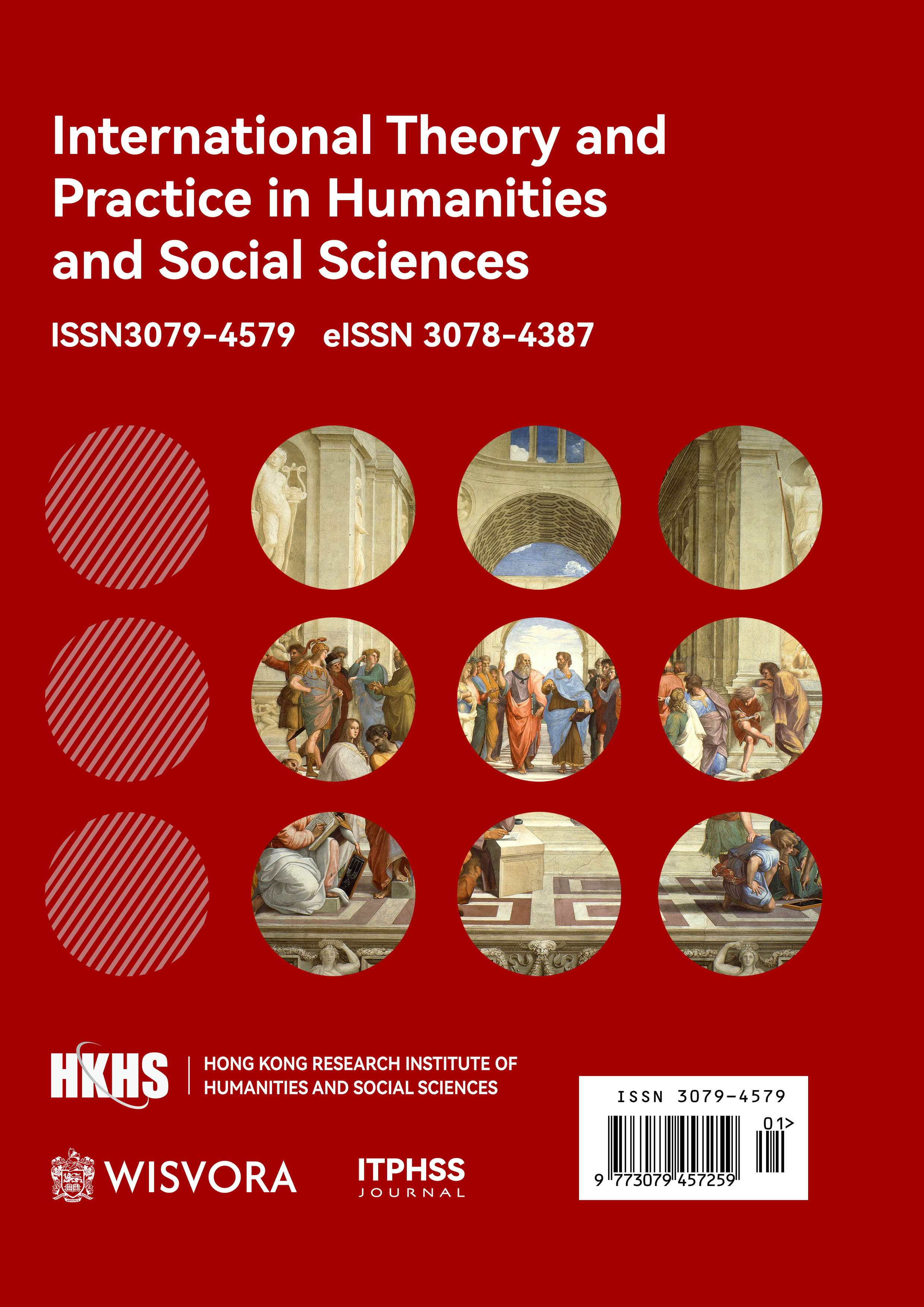Abstract
In the digital age, the prevalence of online content sharing blurs the line between copyright-infringement crimes and legal sharing. The determination of copyright-infringement crimes faces challenges such as diverse profit-making motives due to Internet development, inapplicability of traditional harm-assessment methods in the digital context, difficulty in evidence collection caused by the concealed online environment, and ambiguity in defining “reproduction” and “distribution” in network communication. Meanwhile, legal sharing under fair-use regulations has practical issues like unclear boundaries, unpredictability, and inconsistent judicial application. This paper analyzes the elements of copyright-infringement crimes, fair-use provisions, and takes website-based film, TV, and music dissemination as an example. It concludes that accurately defining these boundaries is crucial for protecting copyright holders, promoting the cultural industry, and regulating online activities. Continuous refinement of legal applications is essential to balance copyright protection and the public’s access to knowledge, ensuring fairness in the copyright field.
References
References
Chen, Y. J., & Zeng, X. Z. (2022). Research on the criminal law regulation of web crawlers. Social Sciences in Guangdong, 5, 240–253.
Cui, W. W. (2015). A discussion on the attempted form of the crime of infringement of copyright. China Publishing Journal, 8, 52–56.
Deng, Y. H. (2024). A reexamination of the "for the purpose of profit-making" in the crime of infringement of copyright. In Proceedings of the 2024 Symposium on Humanities and Technology Theme (pp. 52–61). School of Law, Guiyang University of Humanities and Technology. https://doi.org/10.26914/c.cnkihy.2024.008655
Dong, T. (2023). Research on the governance of crimes infringing intellectual property rights in the era of globalization. Intellectual Property, 10, 43–70.
Gao, L. (2023). Review and reconstruction of the system of fair use of copyright in the digital age—Based on the theoretical analysis of technological neutrality. Journal of Soochow University (Law Edition), 3, 41–52. https://doi.org/10.19563/j.cnki.sdfx.2023.03.004
Gao, M. X., & Wang, J. P. (2007). Research on several issues in the identification of the crime of infringement of copyright. Chinese Journal of Criminal Law, 3, 3–9.
Gao, Z. (2017). Seizing the source of counterfeits and locking in key evidence—A record of handling the case of infringement of copyright by Luo Kaiyu and others in Guangdong. People's Procuratorial Semimonthly, 12, 62–64.
Guo, M. Z., & Ming, R. B. (2001). Fair use of copyright on internet. Journal of Xi'an Jiaotong University (Social Sciences Edition).
Hao, C. L. (1995). A discussion on the issue of fair use of copyright in China. Journal of Renmin University of China, 4, 58–64, 127.
Huang, W. J. (2024). On the optimization of the rules of fair use of copyright—Based on the effective allocation of the cost of defining rights. Academic Research, 10, 67–72.
Kuwano, Y. (2010). The objective element of the crime of copyright infringement. Shimane Law Review, 54, 117–143.
Li, M. X. (2022). The dilemma and way out of the rigidity of the rules of fair use in the copyright law. Publishing Panorama, 11, 52–55, 87. https://doi.org/10.16491/j.cnki.cn45-1216/g2.2022.11.010
Li, Y. S., & Yuan, H. X. (2017). The criminal law response to the crime of infringement of copyright by network cloud service providers—The application of the doctrine of substantive interpretation of criminal law. Journal of Jishou University (Social Sciences Edition), 2, 65–71. https://doi.org/10.13438/j.cnki.jdxb.2017.02.013
Liao, X. H. (2010). Improving the constituent elements of the crime of infringement of copyright. Special Zone Economy, 2, 254–256.
Liu, J. M. (2023). The application dilemma and countermeasures of the fair use provisions related to news in the new copyright law. Cultural Industry Research, 2, 385–396.
Luo, X. (2014). On the scope of criminal protection of copyright—A comparative analysis based on the copyright law and the criminal law. Intellectual Property, 10, 50–56.
Shao, H. H. (2023). Algorithmicization of fair use of copyright: Necessity, possibility, and limits. Journal of Finance and Economics Law, 4, 149–164. https://doi.org/10.16823/j.cnki.10-1281/d.2023.04.011
The Beijing News. (2024, October 15). Can libraries digitally copy their collections for readers to read? Beijing court cases clarify. Jinri Toutiao. https://www.toutiao.com/article/7425857617966137882/
Wenzhou Municipal People’s Government. (2024, April 28). Wenzhou police crack the first case of infringing the copyrights of online writers in the city. Official website of Wenzhou Municipal People’s Government. http://www.wenzhou.gov.cn/art/2024/4/27/art_1217833_59245530.html
Wu, G. (2024). International comparison and enlightenment of the provisions on fair use of copyright with libraries as the special applicable subjects. Library Development, 5, 60–73, 86. https://doi.org/10.19764/j.cnki.tsgjs.20230880
Xiong, Q. (2024). The economic analysis paradigm of the identification of fair use of copyright in "secondary creation" behaviors. Contemporary Law Review, 1, 108–120.
Yao, W. Q. (2022). A review of the subjective purpose of the criminal law protection of copyright in the era of digital copyright. Inner Mongolia Social Sciences, 6, 96–103. https://doi.org/10.14137/j.cnki.issn1003-5281.2022.06.014
Yi, L. (2022). The constitutional interpretation of the system of fair use of copyright in China. Nanjing University Law Review, 1, 88–102. https://doi.org/10.13519/b.cnki.nulr.2022.01.006
Zou, S. F. (2016). Research on the indirect infringement liability of copyright of video sharing websites. Journal of North China University of Water Resources and Electric Power (Social Sciences Edition), 2, 106–110. https://doi.org/10.13790/j.cnki.issn1008-4444.2016.02.028

This work is licensed under a Creative Commons Attribution 4.0 International License.
Copyright (c) 2025 咨言 林 (Author)

